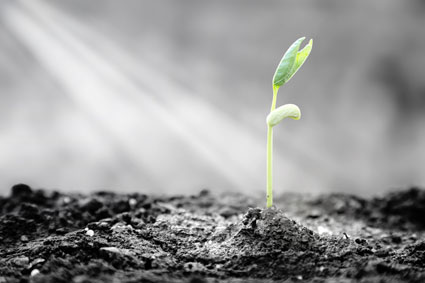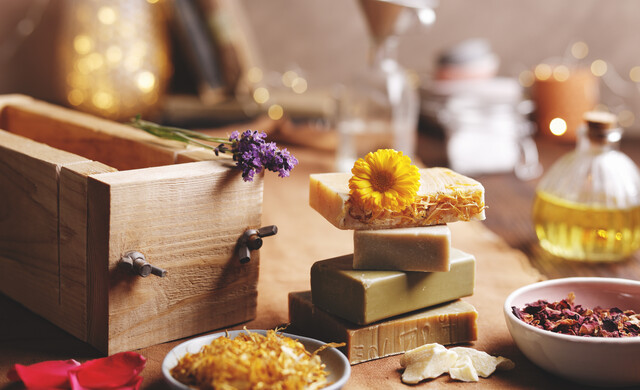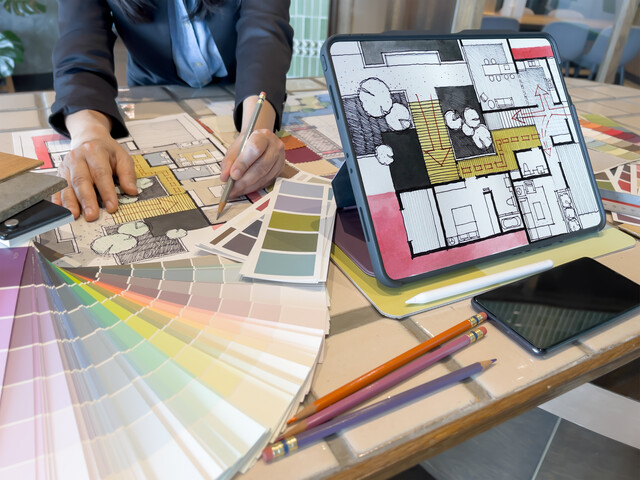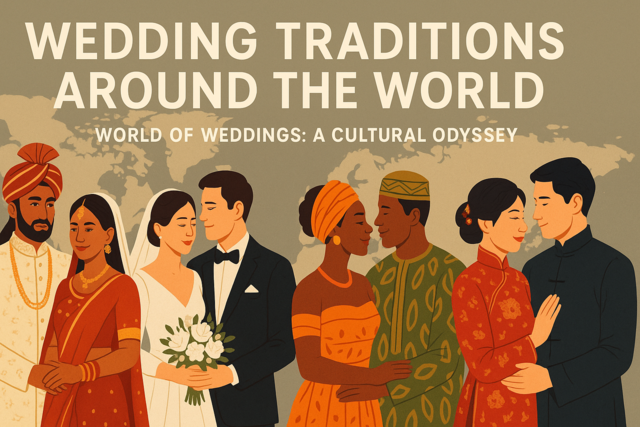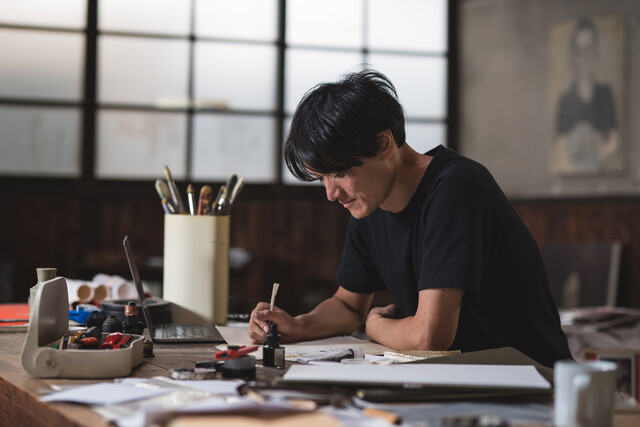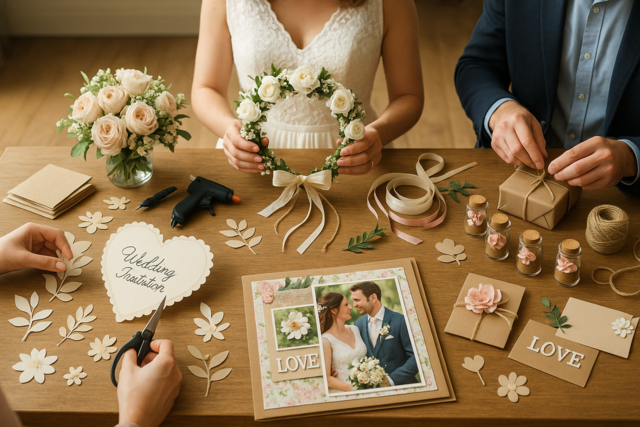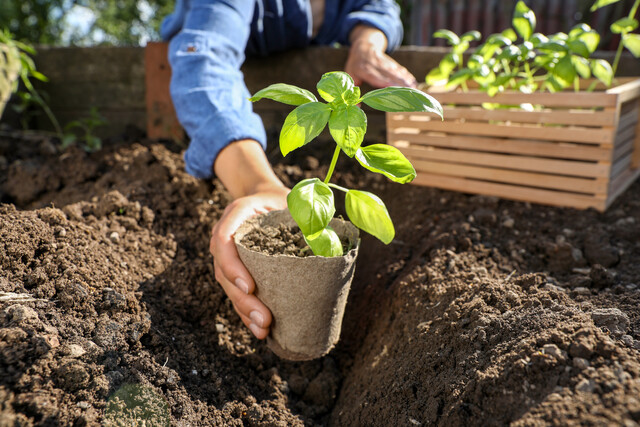In order to do a job properly, you need the right tools.
Most floral arrangers and designers have a small tool kit of their favorite tools. The floral designer from White Poppy in Phoenix who allowed me to shadow her for several events carries a bag of these tools with her to take care of any potential mishap once the flowers are delivered.
With this little bag of tools she is able to work wonders. At an anniversary event last weekend the guest of honor broke the main flower off of her wrist corsage. Fortunately, the designer pulled out a tube of fresh flower glue and was able to get the woman back out on the dance floor in minutes. With the tools, she's a miracle worker. Without it, she is helpless. When you put together your tool kit for arranging flowers, you'll want to keep in mind a second, portable tool kit if you also deliver the arrangements to their intended locations.
Basic Tools
The first set of tools that we'll cover are the hand tools that you use to manipulate the flowers. These are tools that you will use again and again. Here is a list of the most basic tools you want to have:
Floral Clippers - used to cut the stems of flowers, cut off leaves, clip heads off flowers to use in various arrangements. Keep these in good condition so that they are always sharp and ready to use. Dull clippers are like using dull scissors on a piece of fabric, rather than making a crisp, clean cut, they will only chew through the plant material, leaving behind a mangled mess.
Knife - this can be a Swiss Army knife, a sharp paring knife, or a specialized floral knife. When you're first beginning, see if you can find some equipment around the house. My first floral knife was a paring knife I stole from my kitchen. It is a good size, easy to keep sharp, and easy for me to handle. I never use tools that are awkward.
Wire Cutters - never use your knife or floral clippers or scissors for cutting wire. It will cause them to dull very quickly and frustrate you when you really need to get work done, but are hampered by a damaged tool. You will use wire cutters for cutting floral wire as well as things like chicken wire for use in stabilizing a larger floral arrangement.
Basic Equipment
Basic equipment is the hardware that you'll need to create floral arrangements. These include:
Floral Foam - (Oasis) This is used for fresh flowers, and is soaked in water ahead of time to keep the floral arrangement well watered for a period of several days. It will take only about a minute to become completely soaked with water, and will take daily watering to help your arrangement stay fresh. Most floral foam also has an anti-bacterial substance that works to repel the development of bacteria, the biggest enemy of fresh flowers. Most floral designers place the premeasured and precut floral foam into a dish of clean cool water. It will quickly fill with water and become very heavy. If you don't have a container large enough for the entire brick of floral foam, you can wet it on one side, then flip it over to saturate the other side. This works quite well.
Floral Styrofoam - This is not to be confused with floral foam, but it often is. I once purchased what I thought was pre-shaped Oasis to use in a tea mug for an arrangement, because I was in a hurry, I didn't read the label. Here's what floral Styrofoam does when placed in water- it floats. The Oasis type of floral foam instantly sinks into the water as it absorbs vast quantities of water. This type of floral foam works very nicely for silk or preserved floral arrangements, but will do nothing for your fresh flowers.
Florist Tape - Also called "pot tape", is a very strong tape that is used to
keep foam securely attached to a container. It can also be used to create a grid at the top of an arrangement container to help hold flowers in place.
Stem Tape - This is a tape that is more waxy than sticky and is used to wrap floral stems with wire to both strengthen the stem and to hide the use of a wire in an arrangement. Most florist tape comes in dark green, light green, white, and tan.
Florist's Fix - This is a gum-like material that helps to bond two dry components together, like a frog in the bottom of a container. Once in place, it won't matter if water is introduced, it will still remain in place.
Twine or String - Used when binding a hand tied bouquet. Some people use wire, others prefer to use string or twine. This is a personal preference, but I see spools of twine in every floral shop I've been in.
Chicken wire - otherwise called wire netting is used to stabilize larger arrangements. It can be used over a dome of foam or on the top of a large vase or urn to hold heavier arrangements in place, like those that feature larger branches of bushes and trees.
Plastic dishes - These are inexpensive and used as a base for many tabletop arrangements with the addition of some floral foam in which to insert the stems of your flowers. They are available in a wide variety of shapes and sizes, some large enough to accommodate an entire block of floral foam for a larger arrangement.
Florist Wire - Usually available in 18 inch lengths of varying gauges, this wire is used to stabilize individual stems, especially long ones. We'll talk more about floral wire later on in the lessons.
Paddle Wire - This is a finer gauge wire that is used for wrapping wire around stems and arrangements to hold them in place. It is wrapped in bulk around a "paddle".
Floral Picks - These are green wooden picks with a little bit of wire attached at an end. These are used to create a strong "stem" on a flower that usually does not have a stem strong enough to be inserted into an arrangement.
Orchid Tubes - These are small plastic tubes that have a rubber top with a hole just large enough to hold the stem of an orchid in place. The tube holds water during transport, and can even be used to hold individual orchids or lilies in place in an arrangement, when they are pushed into a foam form.
Basic Supplies
Basic supplies include materials that help to decorate your floral arrangements. These include things like:
Pearl-headed pins - used to finish a ribbon-covered handle of a bouquet, or to attach a corsage or boutonniere.
Ribbon - Many floral arrangements are completed with the addition of ribbon. Bridal bouquets use ribbon that either matches or complements the bride's gown. Corsages are completed with a smaller ribbon made into a bow. There are many types of ribbon used in floral arranging and as you continue on your journey, you'll develop quite a collection of different kinds of ribbon.
Raffia - this is used when a more natural tone is needed for a finishing touch for a floral arrangement. They come either in a natural color or in a wide variety of dyed colors. It can be looped into the arrangement, used as a bow, or tied around bouquets or containers to give a more rustic look to an arrangement.
Cut Flower Food - this is almost always available wherever fresh flowers are sold. This is an essential ingredient to keeping your flowers fresh. Can be purchased wholesale in large buckets for people who are in the business of arranging flowers. Otherwise, ask your florist for a discount if you purchase a dozen or more packets at a time.
Pearls and jewels - Sometimes a single rhinestone or crystal glued into the center of a flower gives it that pop for a bit more glitz and glamour. In a bridal bouquet, a crystal glued to the center of each tiny white stephanotis makes for an eye-catching and elegant bouquet. Pearls on a wire can be used to wrap a bridal bouquet, again giving it a spark of personality.
Clippers
Beginning floral designers will want to spend a little money on their clippers because you will use this tool more than any other tool in your tool kit. They need to be strong enough to cut through some of the woodier stems, and still manage to cut fragile stems without crushing them.
As you will later learn, conditioning your flowers as soon as you get them home or in your workplace is critical to how long your floral arrangement will last. One of the steps of conditioning flowers is to cut every stem as soon as you get them unwrapped and place them in a container of water for a drink. Many times, flowers have been out of water long enough that the bottom of their stems are dried and blocked. Putting them in water this way will do no good, they can't drink. A sharp clean angled cut will allow your flowers to get a drink so they will be in perfect condition when you begin your arrangement
Tools to Support
As you noticed in the list, there are a number of tools that floral designers use to support their floral arrangements. Some flowers are so delicate that each and every head and leaf will need to be wired and supported in order to look good in an arrangement. Other arrangements need stronger support at the base to hold the weight of a very large, woody arrangement. Learn the tools of support and how to properly incorporate them into your design which includes floral tape, floral pins, floral picks, wire, and floral staples, etc.
Tools to Embellish
In order to make your floral arrangements stand out, use proper embellishments to complete the look or design of your arrangement. Whether it is the ribbon and ornamental pin finish on the stems of a floral bouquet, or a raffia wrapping around the base of an urn for a woodland display, these finishing touches mark the difference between a professional and an amateur.
You don't have to go out right away and purchase everything you might ever need. Purchase embellishment tools as you need them, and anything that is leftover, you save for future arrangements. Pretty soon you'll develop an inventory of materials from which to choose. You will also determine which embellishment tools you prefer to work with and those you prefer to avoid.
Tools to Hydrate
Because you are working with perishable items, keeping your flowers hydrated is your primary concern. Very few arrangements will be made without consideration for watering the flowers, and these will only be used for a very short period of time. Garlands for a wedding or dinner party are one such project. Most other floral arrangements use some sort of container or floral foam to make water available to the flowers in the arrangement to allow them to last as long as possible.
Fresh flowers last only as long as they're given fresh water and have the opportunity to use that fresh water. We will talk a great deal about cleaning and conditioning flowers once you get them home, but I want you to understand just how important this is. The longer your flowers last, the more your clients will return to you again and again. If your flowers wilt immediately upon delivery you're either buying old flowers, not caring for them properly, not cleaning them or not hydrating them properly. Without water, fresh flowers die very quickly.
Gathering your tools, equipment, and supplies will take a little time, but once you use the right tool for the job, you'll become faster, more proficient, and more successful in your job as a floral designer.


